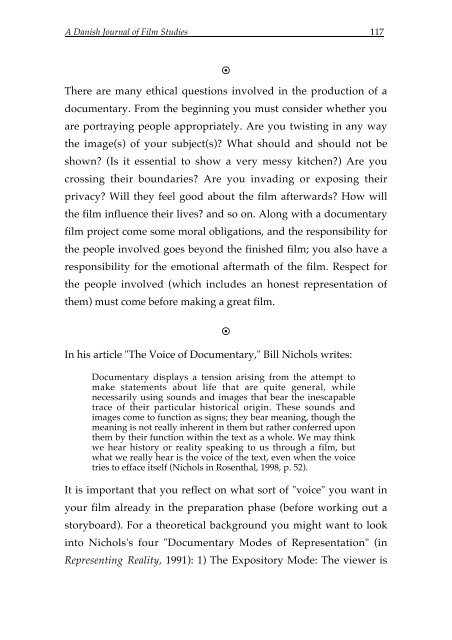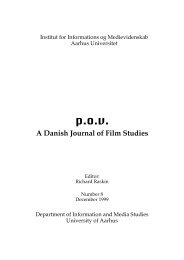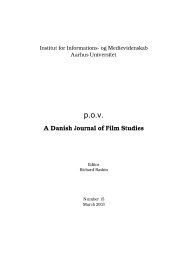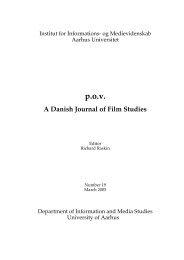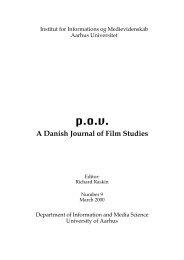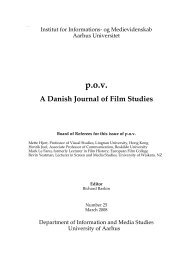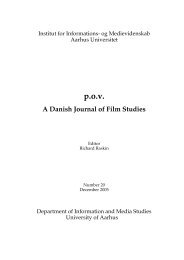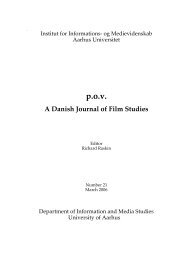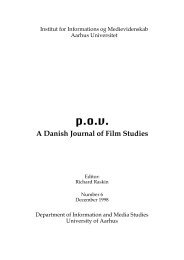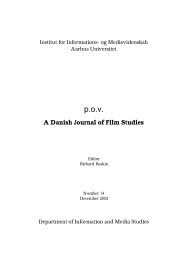The Face of Time - POV - Aarhus Universitet
The Face of Time - POV - Aarhus Universitet
The Face of Time - POV - Aarhus Universitet
Create successful ePaper yourself
Turn your PDF publications into a flip-book with our unique Google optimized e-Paper software.
A Danish Journal <strong>of</strong> Film Studies 117<br />
<br />
<strong>The</strong>re are many ethical questions involved in the production <strong>of</strong> a<br />
documentary. From the beginning you must consider whether you<br />
are portraying people appropriately. Are you twisting in any way<br />
the image(s) <strong>of</strong> your subject(s)? What should and should not be<br />
shown? (Is it essential to show a very messy kitchen?) Are you<br />
crossing their boundaries? Are you invading or exposing their<br />
privacy? Will they feel good about the film afterwards? How will<br />
the film influence their lives? and so on. Along with a documentary<br />
film project come some moral obligations, and the responsibility for<br />
the people involved goes beyond the finished film; you also have a<br />
responsibility for the emotional aftermath <strong>of</strong> the film. Respect for<br />
the people involved (which includes an honest representation <strong>of</strong><br />
them) must come before making a great film.<br />
In his article "<strong>The</strong> Voice <strong>of</strong> Documentary," Bill Nichols writes:<br />
<br />
Documentary displays a tension arising from the attempt to<br />
make statements about life that are quite general, while<br />
necessarily using sounds and images that bear the inescapable<br />
trace <strong>of</strong> their particular historical origin. <strong>The</strong>se sounds and<br />
images come to function as signs; they bear meaning, though the<br />
meaning is not really inherent in them but rather conferred upon<br />
them by their function within the text as a whole. We may think<br />
we hear history or reality speaking to us through a film, but<br />
what we really hear is the voice <strong>of</strong> the text, even when the voice<br />
tries to efface itself (Nichols in Rosenthal, 1998, p. 52).<br />
It is important that you reflect on what sort <strong>of</strong> "voice" you want in<br />
your film already in the preparation phase (before working out a<br />
storyboard). For a theoretical background you might want to look<br />
into Nichols's four "Documentary Modes <strong>of</strong> Representation" (in<br />
Representing Reality, 1991): 1) <strong>The</strong> Expository Mode: <strong>The</strong> viewer is


